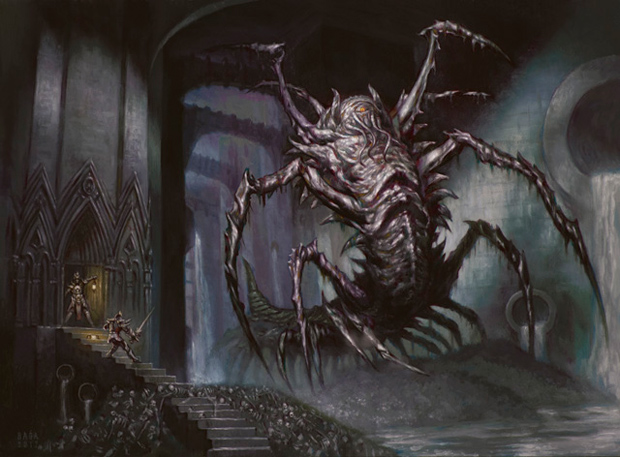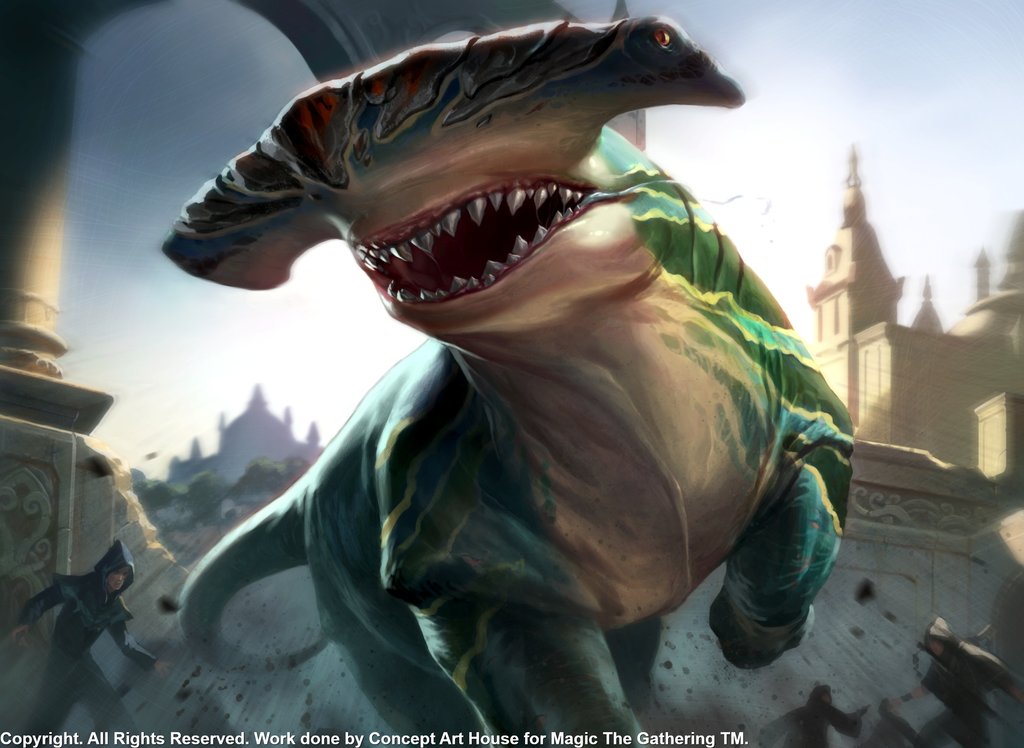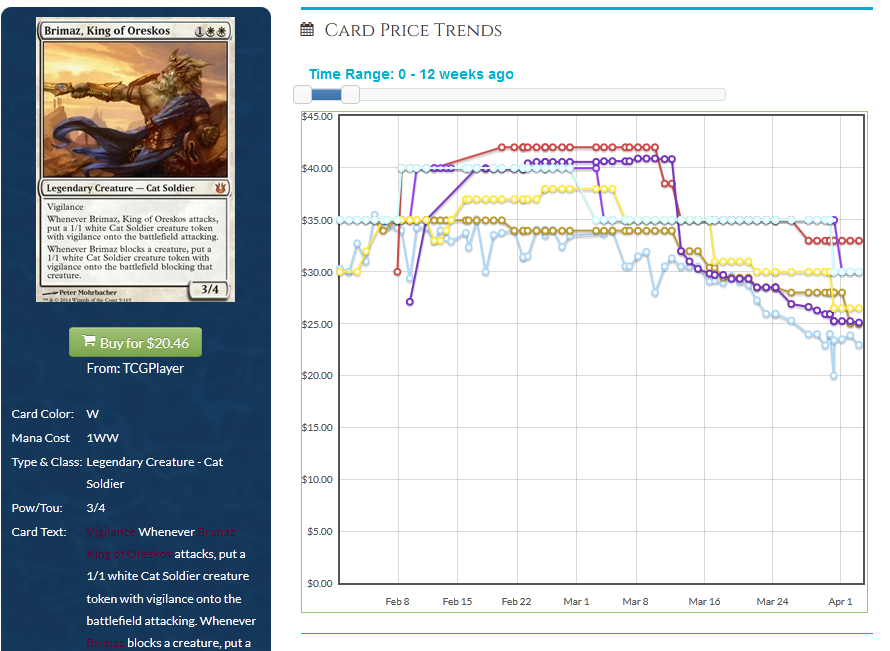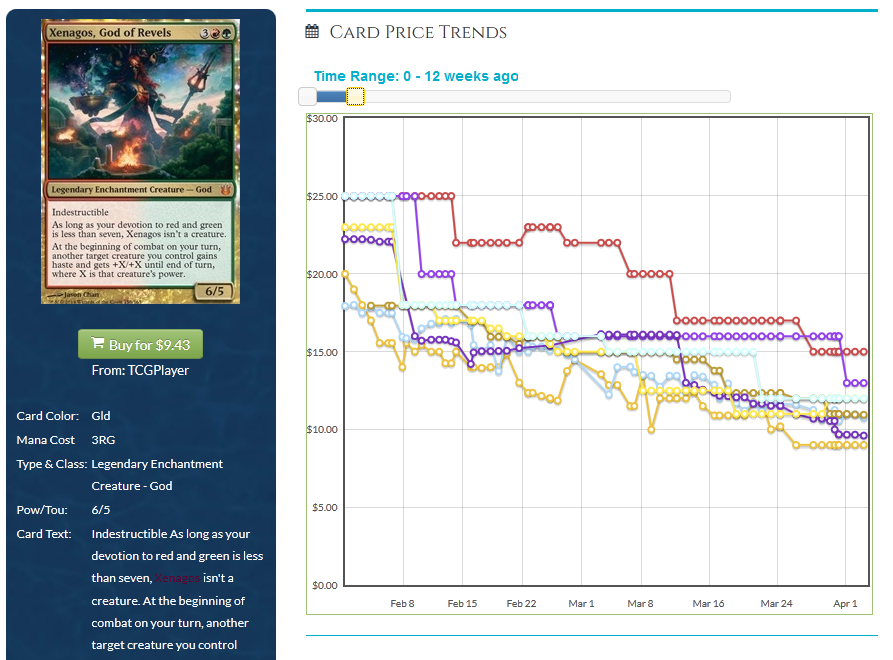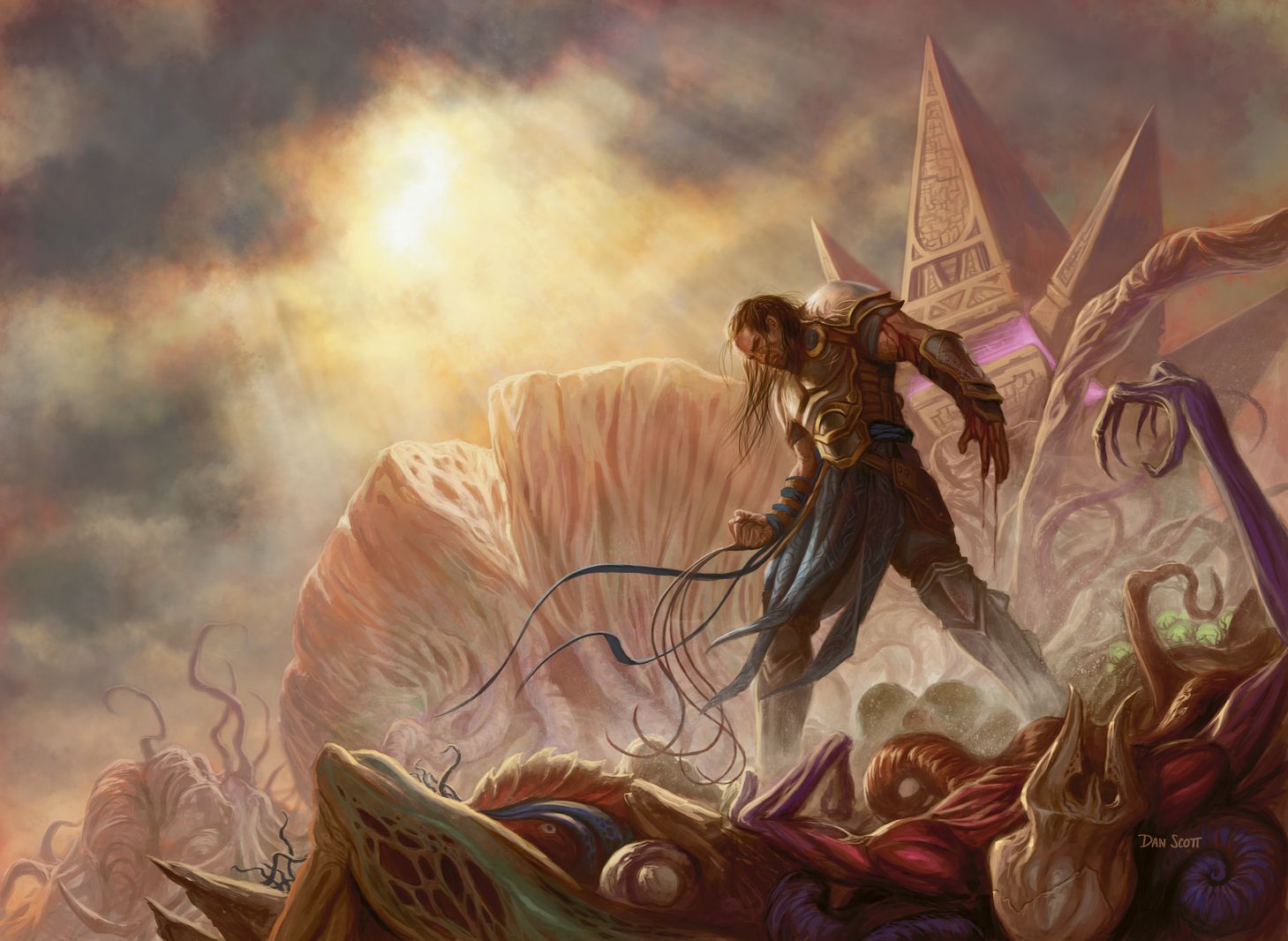By: Travis Allen
Consuming Aberration is a $4 card. Consuming. Aberration. Is a $4 card. Are you really reading these words? Do you understand what they mean? Read them again. Think about them. Consuming Aberration is a $4 card. Huh. What does that mean?
Well, it means we should take it out of our bulk boxes.
I’m not sure how I stumbled upon this. I remember plugging it into MTGPrice for some reason and seeing a price of $4.10. I assumed it was a mistake. The site is great, but there are always algorithmic problems and such. I flipped over to my magiccards.info tab. I plugged it in. $3.72 mid.
Huh.
I flipped back to MTGPrice. The buylist was $2.32. ABU Will give you $2.32 for copies of Consuming Aberration. ABU Games will give you more than two American dollars for a copy of Consuming Aberration.
Huh.
Where is the demand for this card coming from? Who is driving the price up to $4? It’s not an old, out-of-print diamond-in-the-rough gem. It isn’t on the reserved list. It’s a Standard legal rare that sees absolutely zero play in any constructed format.
Think about your local store. Have you ever, since Gatecrash released, heard someone unironically ask if you had any Consuming Aberration for trade?
Nobody wants this trash. It’s complete and utter garbage. It is the absolute worst kind of rare. 100% bulk. (Or so we thought.) The next time you’re at your LGS, yell out “does anyone want a free Consuming Aberration?” It is entirely possible that not a single person will want the free card. Think about that. In a room full of Magic players, you literally could not give this card away. This will not be true of every store, but it will certainly be true of some.
What else in Standard costs $4 right now? Supreme Verdict, sweeper du jour and playable in the four largest constructed formats, is $6. A bit more, yes, but it’s still in the same ballpark. It’s a lot closer than most of us would have guessed without looking. Desecration Demon, scourge of the skies and bane of green decks everywhere is $5. This is a card that has a good 70% chance to win any given Standard GP and it’s only $1 more than Consuming Aberration. Puzzled yet?
Most of the Scrylands are around $4 to $5 as well. Temple of Enlightenment isn’t, but the rest are hanging around there. The most important lands in the largest sanctioned format are about the same price as Consuming Aberration. That tells us something curious.
Price is a factor of supply and demand. For the most part we can assume that Consuming Aberration and any given Scryland should have the same supply. (Really, the Scrylands should be lower supply right now if anything. Gatecrash has come and gone, and there are virtually no new packs being opened. Theros and BOG are still being drafted, so there is still some flow of Scrylands.)
If you assume that the supply is equal between the two cards, and their prices are still just about equal, what does that mean for the rest of our equation? It means that the demand for the Scrylands is equivalent to the demand for Consuming Aberration. Consuming Aberration is just as desirable as the Scrylands. If everyone at your LGS is looking for Scrylands but nobody wants Aberration, just where is this demand coming from?
Welcome to the invisible majority. All of us – the tournament grinder and speculators, the heavy traders and constructed players – are the minority of Magic players. Of course, we FEEL like we’re the majority. We’re all loud, we talk on every form of social media, and we’re the ones represented on official coverage. Wizards isn’t broadcasting kitchen table “anything goes” four-Sol-Ring four-Tolarian-Academy Magic on their Twitch channel. But the reality of the situation is that you and I and everyone like us comprises a far smaller portion of the Magic world at large.
Obviously the price swings on tournament staples is nobody’s fault but our own. Casual players aren’t making Sphinx’s Revelation and Voice of Resurgence $30. But they are capable of making Consuming Aberration a $4 card, with absolutely no help from any of us. It requires some serious demand to move a Standard rare to $4, and by golly they did it. When the the casual market can push a bulk Standard card that hard, we need to be paying attention. The market force is bigger than any of us, but if we hop on the wave we maybe be able to ride it.
Price behavior is going to be quite different than we’re used to. Most of us have come to be familiar with the wild nature of constructed staples. Cards rise and fall by factors of ten semi-regularly. We understand rotation, we understand “constructed playable,” and we understand ban lists. This is all irrelevant when dealing with casual cards though. There are no rotations. There aren’t “staples” or fear of reprints or ban lists. There’s a large, quiet group of players and there are cool cards. Column A wants Column B. It doesn’t matter whether its March or September or whether the card is legal in Modern. Players want cards and they order them online or purchase at their LGS from the total finite pool available. Slowly the supply dwindles, and as it does, prices rise. Occasionally copies make it back into rotation if a player sells their collection to a friend, but for the most part the supply is evaporating. The result is a plodding, semi-smooth rise in price.
With the recent influx of players in the last few years, there’s going to be growing demand on old casual staples. This is why Vigor is $20. Yet there is stilll profit to be made. There’s plenty of other old casual cards that haven’t adjusted their price. While they may not spike as often, and they aren’t sexy, they’re going to be practically guaranteed profit. Buying quiet casual allstars means you can’t brag about looking like a genius because you bought ninety Heralds of Torment at $.40 before they jumped to $7. But you can fill your collection with $1-$5 casual cards that are virtual locks to double or triple (or more?) in price within a year or two.
